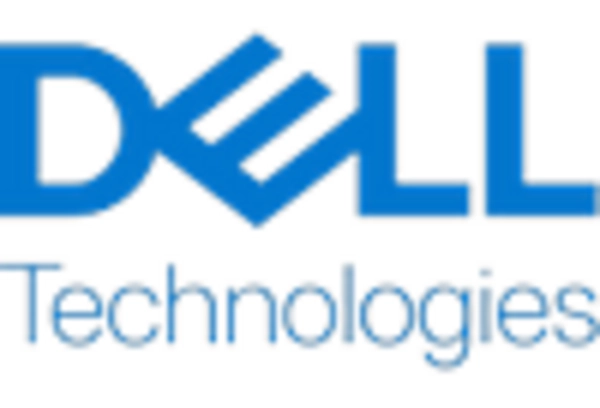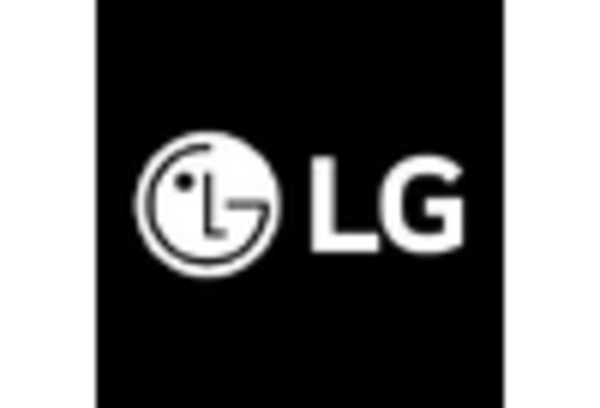The gaming monitors market in Italy exhibits a dynamic competitive landscape, characterized by rapid technological advancements and evolving consumer preferences. Key players such as ASUS (TW), Dell (US), and Samsung (KR) are at the forefront, each adopting distinct strategies to enhance their market presence. ASUS (TW) focuses on innovation, particularly in high-refresh-rate displays, which appeals to competitive gamers. Dell (US) emphasizes a blend of performance and design, targeting both gamers and professionals. Meanwhile, Samsung (KR) leverages its extensive R&D capabilities to introduce cutting-edge display technologies, such as QLED and ultra-wide formats, thereby enhancing user experience. Collectively, these strategies contribute to a competitive environment that prioritizes technological superiority and user-centric design.
In terms of business tactics, companies are increasingly localizing manufacturing to reduce lead times and optimize supply chains. This approach not only enhances responsiveness to market demands but also mitigates risks associated with global supply chain disruptions. The market structure appears moderately fragmented, with several players vying for market share, yet the influence of major brands remains substantial. The collective actions of these key players shape pricing strategies and product offerings, fostering a competitive atmosphere that encourages innovation and differentiation.
In October 2025, ASUS (TW) announced the launch of its latest gaming monitor series, featuring advanced adaptive sync technology aimed at reducing screen tearing. This strategic move underscores ASUS's commitment to enhancing the gaming experience through technological innovation. By prioritizing features that cater to competitive gamers, ASUS positions itself as a leader in performance-driven products, likely attracting a dedicated customer base.
In September 2025, Dell (US) unveiled a partnership with a leading gaming software company to integrate advanced gaming features into its monitors. This collaboration is significant as it not only enhances the functionality of Dell's products but also aligns with the growing trend of software-hardware integration in gaming. Such strategic alliances may bolster Dell's market position by offering unique value propositions that resonate with gamers seeking comprehensive solutions.
In August 2025, Samsung (KR) expanded its product line with the introduction of eco-friendly gaming monitors, utilizing sustainable materials in their construction. This initiative reflects a broader industry trend towards sustainability, appealing to environmentally conscious consumers. By integrating sustainability into its product development, Samsung not only differentiates itself but also aligns with global efforts to reduce environmental impact, potentially enhancing brand loyalty among eco-aware gamers.
As of November 2025, the competitive trends in the gaming monitors market are increasingly defined by digitalization, sustainability, and the integration of artificial intelligence. Strategic alliances are becoming more prevalent, enabling companies to leverage complementary strengths and enhance their product offerings. Looking ahead, competitive differentiation is likely to evolve from traditional price-based competition to a focus on innovation, advanced technology, and supply chain reliability. This shift suggests that companies prioritizing R&D and sustainable practices may gain a competitive edge in an increasingly discerning market.
















Leave a Comment